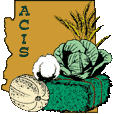 |
|
|
|

|
|||
| |
|||
Plants can be resistant to plant diseases, but how is this resistance accomplished? One method is by employing physical defense mechanisms. Just as our skin provides a physical barrier preventing movement of microbes into our bodies, the cuticle or surface covering on plants serves the same function. Many plant pathogens must adhere to the plant surface to penetrate into the plant and cause infection. This ability to colonize plants may be disrupted by the amount of wax present and the quality of the cuticle that covers plants. Waxes prevent the formation of a film of water on plants, which is essential for deposition or growth of bacterial and fungal pathogens on plants. Abundant plant hairs can perform a similar water repellent function. Cuticle thickness and toughness of epidermal cell walls play an important role in the resistance of plants to several pathogens. This form of disease resistance can be circumvented by wounds. Many pathogenic bacteria and fungi enter plants only through stomata. Their structure and the size of the pore when open can greatly affect the ability of some pathogens to invade these structures. These physical plant attributes that are present before exposure to potential plant pathogens play an important role in a plantís ability to resist many diseases. To contact Mike Matheron go to: matheron@ag.arizona.edu.
|
|||
| Back | |||
For questions or comments on any of the topics please contact Marco Pena at the Yuma Agricultural Center. |
|||
| Home | Cotton
| Veggies | Forages
| Grains | Citrus
| Crop x Crop Insects | Diseases| Weeds | Pesticides | Economics | News | Weather | Research | Photos | Contacts | General Info. Copyright © 2001 University of Arizona, College of Agriculture and Life Sciences Webmaster: Al Fournier (acis@ag.arizona.edu) |
|||